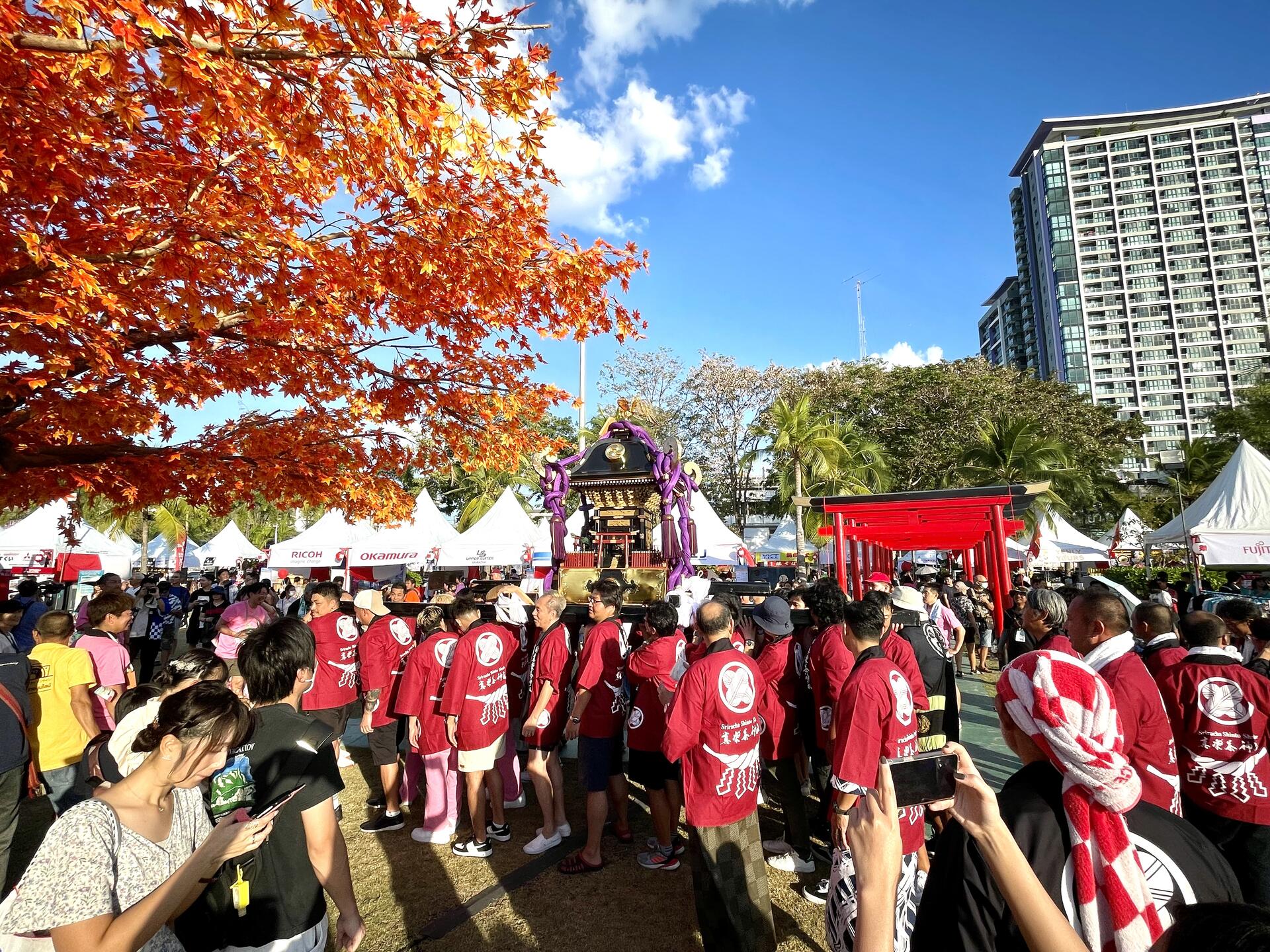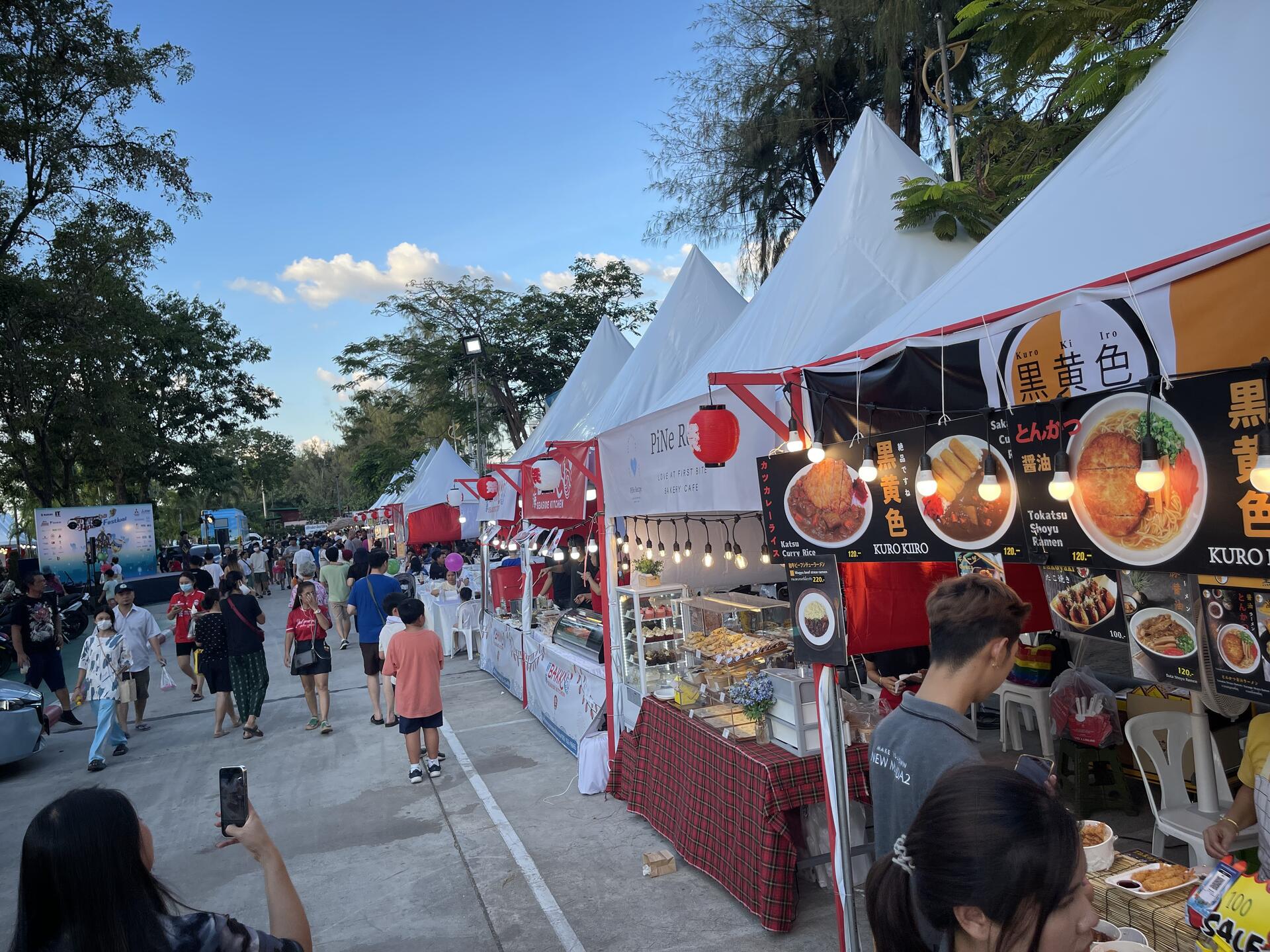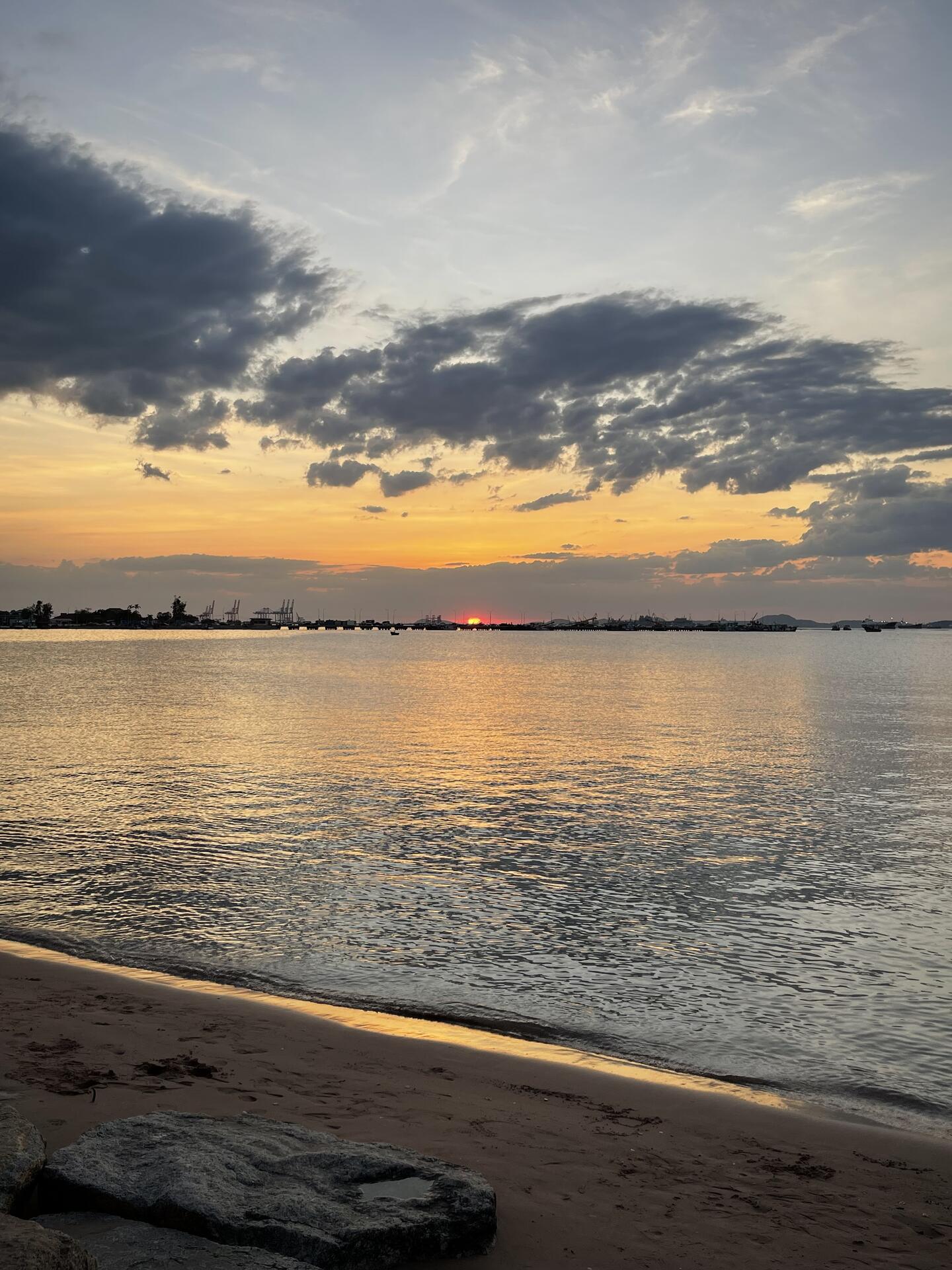Akizum on Nostr: สวัสดีเพื่อนๆ #siamstr ...
สวัสดีเพื่อนๆ #siamstr ผมเพิ่งไปเที่ยวญี่ปุ่นมาครับ ใกล้ๆ แค่ศรีราชานี่เอง #Sriracha #Japanshrine #Thailand
เคยได้ยินมาซักพักแล้ว ว่าที่นี่มีคนญี่ปุ่นเข้ามาทำงานเยอะ จนรวมตัวกันเป็นคอมมูนิตี้ขึ้นมา มีศาลเจ้ามาตั้ง และมีงานเทศกาลแห่เกี้ยวเทพเจ้า มีนักบวชจากญี่ปุ่นมาทำพิธีให้ถึงที่ด้วย ครั้งนี้เลยอยากมาชมด้วยตัวเอง
องค์เทพประจำศาลเจ้าศรีราชานั้นมี 2 องค์ครับ องค์แรกนี่ผมมั่นใจว่าหลายคนได้เจอท่านทุกเช้า อะมาเทราสึ หรือเทพแห่งดวงอาทิตย์นั่นเอง อีกองค์คือ อุกะโนะมิทามะ เทพแห่งเกษตรกรรม (ที่ปัจจุบันเป็นเทพแห่งการค้าขายด้วย คิดว่าเพราะยุคสมัยที่เปลี่ยนไป)
เคนได้ยินคนไทยบางส่วนเรียกที่นี่ว่าเป็น little Japan แต่ผมกลับรู้สึกว่าคนญี่ปุ่นที่นี่เขาค่อนข้างปรับตัว และอยู่ร่วมกับคนที่นี่แบบกลมกลืนจนเหมือนเป็นหนึ่งเดียวกันไปแล้ว ส่วนใหญ่ก็พอสื่อสารภาษาไทยได้ (มากบ้าง น้อยบ้าง)
แล้วถ้าเพื่อนๆ ได้มาเห็นส่วนของศาลเจ้าหลักของที่นี่จะยิ่งเข้าใจ เพราะเขาใช้เนื้อที่แค่ 1 ตึกแถวเท่านั้น กลมกลืนกับบ้านเรือนร้านค้าแถบนั้นอย่างไม่เคอะเขิน
ก่อนจะมาร่วมขบวนแห่ตรงนี้ ผมก็ลองเดินเล่นรอบๆ พบว่าตามตรอกซอกซอยก็มีร้านเล็ก (ที่เหล่าอินฟลูต่างๆ ชอบเรียกว่าร้านลับ) อยู่กันเยอะแยะมากมาย โดยเฉพาะร้านคาเฟ่ที่มีหลายรูปแบบมากๆ บางร้านมีคราฟเบียร์ด้วย ได้ทั้งเช้ายันค่ำ
ใครชอบฟีลแบบเที่ยวเมืองเล็ก ไม่วุ่นวาย ลองมานี่ซักคืนก็เหมาะครับ ส่วนผมขอตัวไปบูชาเทพดวงอาทิตย์ (อาบแดดเช้านั่นแหละ) ต่อล่ะครับ GM ทุกท่าน
I've heard for a while that many Japanese people come here to work and form a community. They even have a shrine and festivals related to their deities. I wanted to see it for myself this time.
The shrine in Sri Racha has two main deities. The first one is Amaterasu, the goddess of the sun. The other is Ukanomitama, the deity of agriculture (currently associated with commerce, perhaps due to changing times).
Some Thais refer to this place as 'Little Japan,' but I feel that the Japanese here have adapted and integrated with the locals so well that it feels like a cohesive community. Most can communicate in Thai to some extent.
If you get to see the main shrine here, you'll understand. It occupies only one row of buildings, blending seamlessly with the local residences and shops.
Before joining the procession, I explored the alleys and found many small hidden shops, especially various types of cafes, some even serving beer in the morning and evening.
If you enjoy the feel of a small, calm town, you might want to try spending a night here.



เคยได้ยินมาซักพักแล้ว ว่าที่นี่มีคนญี่ปุ่นเข้ามาทำงานเยอะ จนรวมตัวกันเป็นคอมมูนิตี้ขึ้นมา มีศาลเจ้ามาตั้ง และมีงานเทศกาลแห่เกี้ยวเทพเจ้า มีนักบวชจากญี่ปุ่นมาทำพิธีให้ถึงที่ด้วย ครั้งนี้เลยอยากมาชมด้วยตัวเอง
องค์เทพประจำศาลเจ้าศรีราชานั้นมี 2 องค์ครับ องค์แรกนี่ผมมั่นใจว่าหลายคนได้เจอท่านทุกเช้า อะมาเทราสึ หรือเทพแห่งดวงอาทิตย์นั่นเอง อีกองค์คือ อุกะโนะมิทามะ เทพแห่งเกษตรกรรม (ที่ปัจจุบันเป็นเทพแห่งการค้าขายด้วย คิดว่าเพราะยุคสมัยที่เปลี่ยนไป)
เคนได้ยินคนไทยบางส่วนเรียกที่นี่ว่าเป็น little Japan แต่ผมกลับรู้สึกว่าคนญี่ปุ่นที่นี่เขาค่อนข้างปรับตัว และอยู่ร่วมกับคนที่นี่แบบกลมกลืนจนเหมือนเป็นหนึ่งเดียวกันไปแล้ว ส่วนใหญ่ก็พอสื่อสารภาษาไทยได้ (มากบ้าง น้อยบ้าง)
แล้วถ้าเพื่อนๆ ได้มาเห็นส่วนของศาลเจ้าหลักของที่นี่จะยิ่งเข้าใจ เพราะเขาใช้เนื้อที่แค่ 1 ตึกแถวเท่านั้น กลมกลืนกับบ้านเรือนร้านค้าแถบนั้นอย่างไม่เคอะเขิน
ก่อนจะมาร่วมขบวนแห่ตรงนี้ ผมก็ลองเดินเล่นรอบๆ พบว่าตามตรอกซอกซอยก็มีร้านเล็ก (ที่เหล่าอินฟลูต่างๆ ชอบเรียกว่าร้านลับ) อยู่กันเยอะแยะมากมาย โดยเฉพาะร้านคาเฟ่ที่มีหลายรูปแบบมากๆ บางร้านมีคราฟเบียร์ด้วย ได้ทั้งเช้ายันค่ำ
ใครชอบฟีลแบบเที่ยวเมืองเล็ก ไม่วุ่นวาย ลองมานี่ซักคืนก็เหมาะครับ ส่วนผมขอตัวไปบูชาเทพดวงอาทิตย์ (อาบแดดเช้านั่นแหละ) ต่อล่ะครับ GM ทุกท่าน
I've heard for a while that many Japanese people come here to work and form a community. They even have a shrine and festivals related to their deities. I wanted to see it for myself this time.
The shrine in Sri Racha has two main deities. The first one is Amaterasu, the goddess of the sun. The other is Ukanomitama, the deity of agriculture (currently associated with commerce, perhaps due to changing times).
Some Thais refer to this place as 'Little Japan,' but I feel that the Japanese here have adapted and integrated with the locals so well that it feels like a cohesive community. Most can communicate in Thai to some extent.
If you get to see the main shrine here, you'll understand. It occupies only one row of buildings, blending seamlessly with the local residences and shops.
Before joining the procession, I explored the alleys and found many small hidden shops, especially various types of cafes, some even serving beer in the morning and evening.
If you enjoy the feel of a small, calm town, you might want to try spending a night here.



